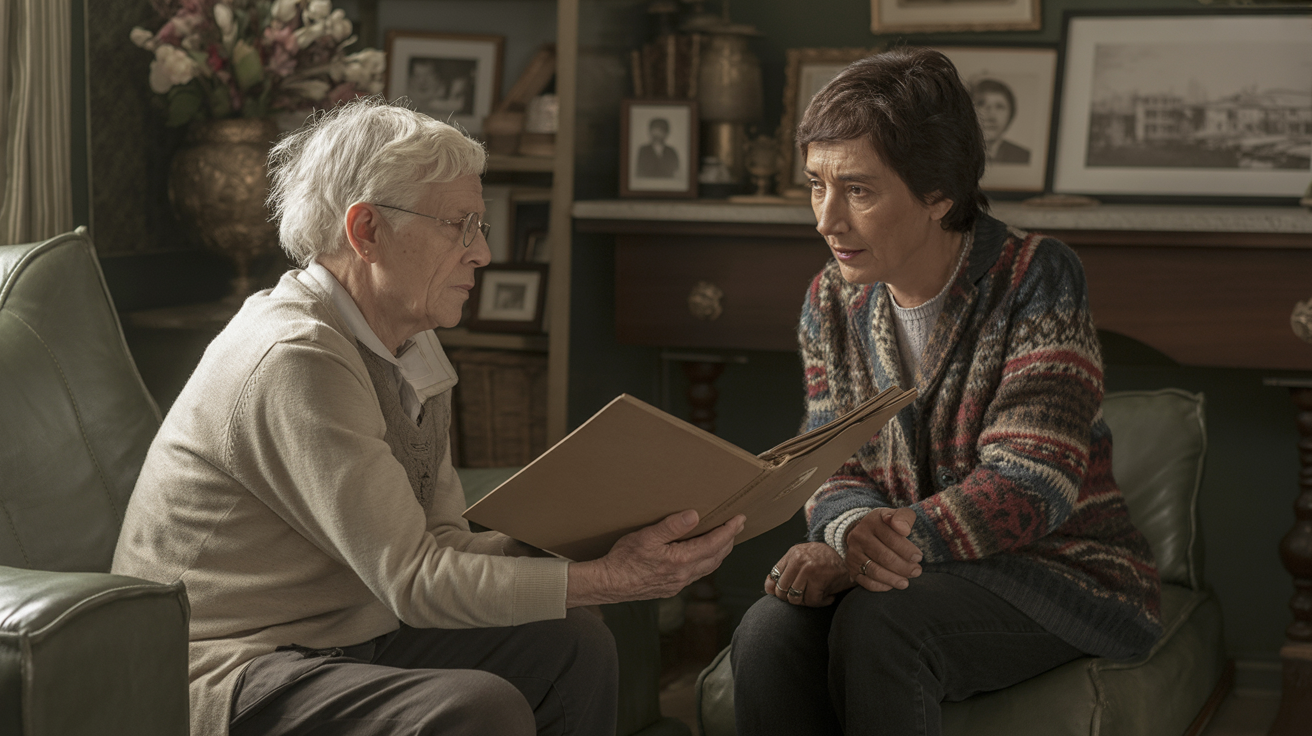Most family historians get it wrong from day one.
I did too.
We obsess over extending our ancestry into the distant past. We hunt for ancestors to fill up our trees, often defining success by the number of people we’ve collected.
But here’s the truth: You’re missing the real treasure.
I recently came across a genealogist with 50 years of experience who shared something profound.
They started like we all do—trying to trace their lineage as far back as possible. They filled binders with pedigree charts. They went back as far as they could, despite the evidence being questionable.
And then they realized something.
All that impressive information? Not that interesting.
The Traditional Approach Fails Us
The traditional genealogy approach is broken. Full stop.
Going backwards in time feels productive. Each generation you add seems like an achievement.
A win.
But what are you really winning?
Names on paper. Dates in boxes. Facts without context.
You end up with ancestors you can’t connect with. People who exist only as data points. Is that really what you’re after?
I doubt it.
The obsession with pedigree creates the illusion of progress. But it’s empty calories.
Genealogical junk food.
Meanwhile, the real feast is elsewhere.
The Sideways Strategy
Here’s what works instead:
Once you identify your great-grandparents, stop going backward.
Instead, work sideways.
Track down the descendants of their siblings—your grand aunts and uncles and their children. Map out the cousin lines.
Why?
Because living relatives possess what dead ancestors cannot give you: context, stories, photos, and artifacts that bring your family history to life.
This is how you transform genealogy from a sterile collection of facts into a vibrant family narrative.
The Ticking Clock
This strategy comes with urgency built in.
Your dead ancestors will always be there. The records aren’t going anywhere.
But your cousins? They’re getting older every day.
When they pass, they take whole encyclopedias of valuable family information with them.
Forever.
Let that sink in.
The cousin who knows exactly who’s in that unlabeled photo from 1952? The one who remembers the family scandal your grandparents never spoke about? The one who saved every letter their mother ever wrote?
They won’t be around forever.
This isn’t theoretical. This is happening now.
Finding Your Cousins
Start with what you know.
Identify your great-grandparents. Then map out all siblings and their children.
Those children’s descendants are your prize.
Once you’ve identified potential cousins, reach out. Be direct but respectful.
A simple message: “Hi, I believe we share great-great-grandparents through [name]. I’m researching our family history and would love to connect.”
No need for complexity. Clarity wins.
The Treasure Hunt
When you meet your cousins (virtually or in person), come prepared.
What you’re looking for:
Family Photos
“I have never failed to find at least one gobsmacking treasure of a photo in there.”
That’s what our 50-year genealogy veteran discovered. Every single time.
That photo album gathering dust in your cousin’s closet? It contains images of your ancestors you’ve never seen. Guaranteed.
The best part? Your cousin probably thinks there’s nothing interesting in there. They’re wrong.
Personal Documents
Look for:
- Letters
- Diaries
- Military papers
- Birth and marriage certificates
- School records
- Employment history
These documents contain details you’ll never find in public records.
Family Stories
These are gold.
Stories passed down through generations reveal the character of your ancestors. Their personalities. Their triumphs and failures.
Record these conversations (with permission). These oral histories are priceless.
Personal Artifacts
The pocket watch your great-grandfather carried every day.
The recipe book your great-grandmother annotated.
The tools your ancestor used in their trade.
These objects connect you physically to your past in ways a census record never will.
Documenting Your Discoveries
Capture everything. Leave nothing behind.
Bring a portable scanner or set up a camera with a tripod. Document everything your cousin shares.
Create a system immediately:
- Label every photo with names, dates, and locations
- Transcribe handwritten documents
- Record the provenance of every item
- Cross-reference with your existing research
Organization matters. What looks obvious today will be confusing in six months.
The Real Value Proposition
Let me be clear about what you gain from this approach.
One page of family history about your great-grandfather’s daily life as a farmer is worth more than an entire volume documenting your connection to royalty.
Why?
Because that farmer is actually connected to you.
You share his DNA, yes. But more importantly, you share the legacy of his choices. His values. His struggles.
That’s your true inheritance.
The stories of ordinary people doing ordinary things reveal extraordinary truths about who you are and where you come from.
Creating Priority and Urgency
Make a list of your oldest living relatives right now.
Not tomorrow.
Today.
Rank them by age and health status. This is your contact priority list.
Start at the top. Work your way down.
Every month that passes is another risk that someone on that list takes their knowledge with them permanently.
Do not delay this work.
The Wider Narrative
As you collect information from multiple cousin lines, patterns emerge.
You’ll discover:
- How different branches interpreted the same family events
- Regional and cultural influences on different parts of your family
- Recurring traits, talents, and tendencies across generations
- The real impact of historical events on your family
This lateral view creates depth that vertical research never can.
You stop seeing ancestors as isolated individuals and start understanding them as part of an interconnected human story—your story.
Taking Action Now
Don’t overthink this. Execute.
This is the truth of genealogy.
Names and dates will wait.
Stories won’t.
Choose wisely.



Mapping sideways DNA also proves the paper trail, we are all told who our grandparents are but is it the truth? Map DNA to tell for sure secret affairs happened then too!
This is perhaps the best advice for anyone at any time. No matter if you are a beginner or if you have been gathering family history for years.
When I began researching twenty years ago I had a buildup of oral family history. It came as a result of ancestors with little or no education handing down their stories. It was also a result of family reunions and just taking the time to visit relatives.
Don’t forget information you might be able to get from neighbors or anyone associated with your family
The reason I go back is to correct errors. I have most descendants and dates.
Being from a large Italian family, but a child of the youngest, I heard a lot of stories and did not have a clear fix on who these people were. My goals were to 1) identify all the people my grandparents knew and 2) record their stories.
I did pretty well.
My grandmother told me she had an ancestor who fled Wales because of some trouble with the law. I looked a lot at towns in England near the Welsh border. Recently spoke to a second cousin? who told me his dad said that ancestor changed his name from Robertson to Hill when he fled….opened up all new avenues and I get to work with a cousin doing it!
The most valuable tool today is DNA for digging deep. I found my original paternal family name spelling, a 9th cousin in Steffisburg, Switzerland last name Reusser.
Sideways? I’ve never thought of it like that, but it makes sense. I’ve been doing that for years. I’ve found lots of interesting people that way, including a state Supreme Court Chief Justice, the Prime Minister of…either Australia or New Zealand. (Can’t remember off the top of my head.) Oh, and the sister of William Tecumseh Sherman!
Best advice. Thank you soooo much. I was stressing over missing info on my 8th great grandfather, born 1777, now I don’t have to thanks to you.
I enjoy you page. I am gonna try the sideways approve. I have a gr gr uncle that I cNt find his wifes grave. Its not registered in find a grave. Contacting cousins ! Also my husbands gr gr grandpa died sometime in 1880 or 1890. No records and since 1890 census isnt around I dont know where he is buried either. Also contacting cousins on that side! Thanks for ideas